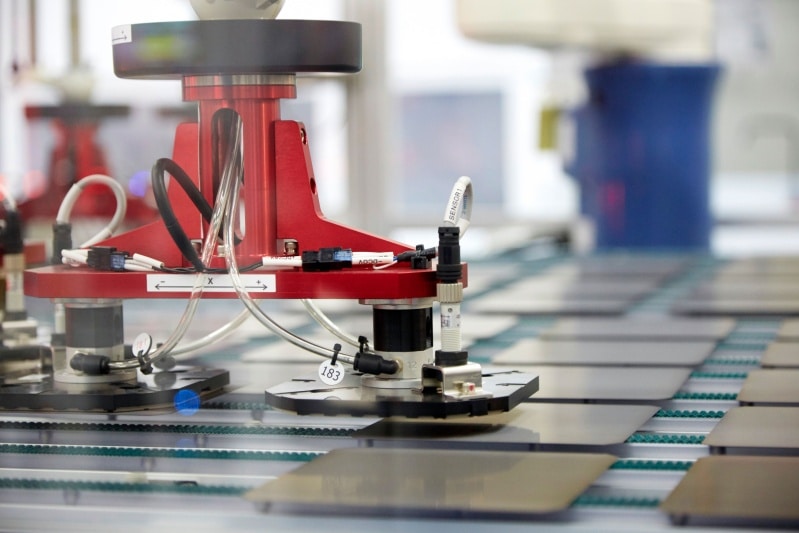Since President Trump took office the U.S. solar industry has endured 30% global tariffs on solar cells and modules under Section 201, global tariffs on steel and aluminum under Section 232, tariffs on Chinese inverters under Section 301 and tariffs on Chinese solar cells, also under Section 301.
These are in addition to the anti-dumping and countervailing duties on solar cells and modules from China and Taiwan launched in two separate rounds in 2012 and 2014 under the Obama Administration.
And today the U.S. International Trade Commission has launched yet another trade investigation, this time narrowly focused on three cell and module makers – JinkoSolar, LONGi and REC Group* – based on a claim by Hanwha Q Cells that these companies have infringed on the company’s specific form of Passivated Emitter and Rear Cell (PERC) design.
This follows on the filing of lawsuits by Hanwha Q Cells against the three manufactureres in courts in both Delaware and Germany.
The ITC investigation is being launched under the auspices of Section 337 of the Tariff Act of 1930, which governs both patent infringement and unfair trade. Through this investigation, Hanwha Q Cells is seeking to bar these companies from importing their PERC cells into the U.S. market.
Q.ANTUM vs. PERC
The central claim that will be investigated is whether or not Jinko, LONGi and REC infringed on Q.Cells passivation technology, which is part of its Q.ANTUM cell design.
Q.ANTUM is a form of PERC, which has become the most widely adopted high-efficiency cell design globally. PERC can boost cell efficiencies at a minimal cost without having to overhaul the entire cell architecture, as is required with Interdigitated Back Contact (IBC) and other high-efficiency designs.
Hanwha has long maintained that Q.ANTUM is substantially different from other PERC designs, but there is significant disagreement about the patents in question under which Hanwha is filing the suits and investigation. LONGi has stated that its cells are not subject to these patents, which they say are based on Atomic Layer Deposition (ALD) processes, as they use a Plasma Enhanced Chemical Vapor Deposition (PECVD) process for passivation.
However, Hanwha maintains that the patent covers both ALD and PECVD processes, and that the resulting cell structure is the basis of the patent.
pv magazine had not yet received responses from LONGi, Jinko or REC Solar regarding this latest development by the time this article was published, and we will publish additional information and responses from these companies as they become available.
* REC Group is a cell and module maker headquartered in Norway with manufacturing in Singapore. It is a separate company from REC Solar, the U.S. commercial solar developer.
This content is protected by copyright and may not be reused. If you want to cooperate with us and would like to reuse some of our content, please contact: editors@pv-magazine.com.









The USA does not need foreign competition from PV manufacturers. We need all those fabs and factories here in the USA.
As is well known, what is holding back PV in the USA is simply the limited number of new utility power purchase agreements that enable new community and utility scale PV farms. There is a surplus of funds that want to invest.
It is best for USA workers to earn high wages making PV. The utilities can pass on higher PV costs to ratepayers. And somewhat higher domestic PV costs will not hold back the retirement of fossil plants – mark my words.
I, for one, want 50% tariffs on all imported goods and services. Lets make america great again with high tariffs.
Unlike the other trade cases, this investigation is not about U.S. manufacturing versus foreign manufacturing. JinkoSolar has a 400 MW factory in Jacksonville, Florida, and despite Hanwha having a 1.7 GW factory in Georgia, the vast majority of both companies’ products are made overseas (and are subject to Section 201 tariffs).
This case is instead about Korean/German Hanwha Q Cells trying to keep Jinko, LONGi and REC out of the U.S. market on the claim that they infringed on its patented technology. This is a war between Asian PV makers.
Trump and the MAGA crowd will do any and everything they possibly can to retard the inevitable dominance of PV and all other renewable energy sources.
Any other considerations are supportive to that thrust at best, it’s all about forcing the US to burn more carbon for as long as possible.